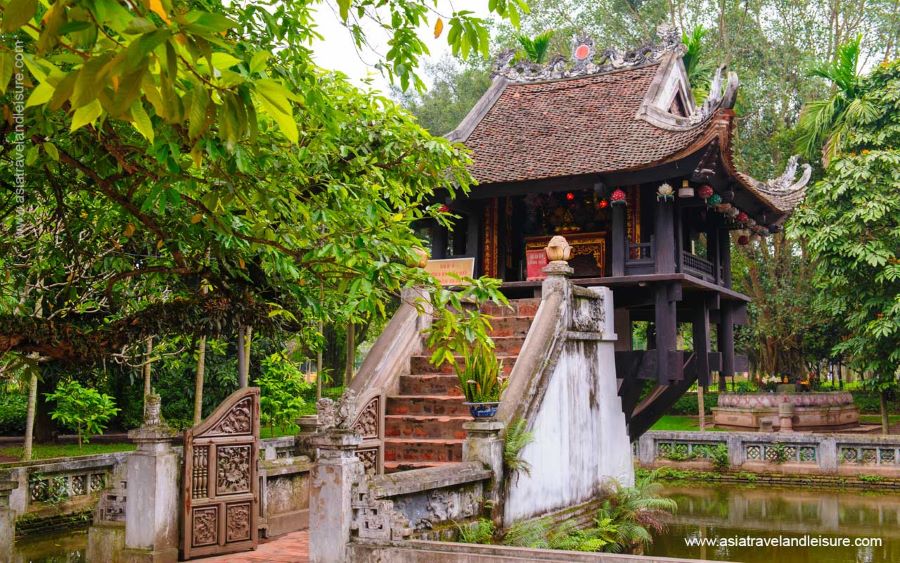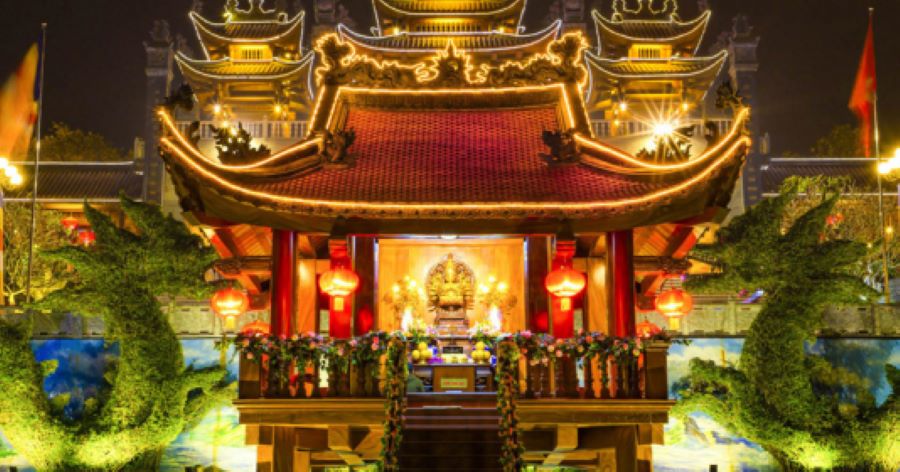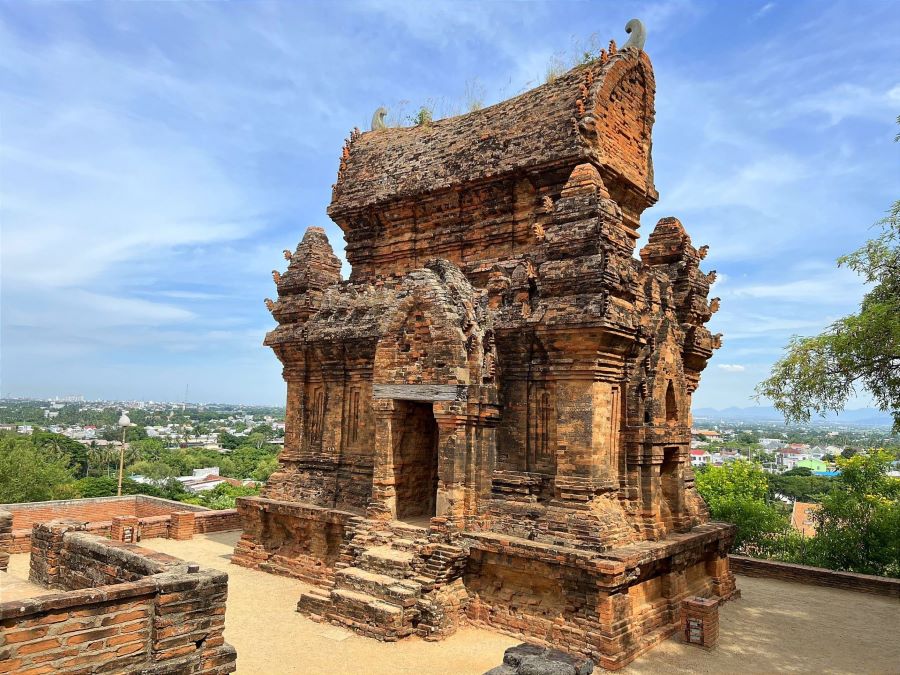The One Pillar Pagoda – A Must-See Hanoi Landmark
The One Pillar Pagoda in Hanoi is a historic Buddhist temple, renowned for its unique architecture and cultural significance, symbolizing purity and resilience in Vietnamese tradition.
The One Pillar Pagoda is a must-visit site in Hanoi, blending history, culture, and spirituality beautifully. Known as “Chua Mot Cot” this iconic temple stands out for its unique architecture and deep cultural significance. Nestled amid Hanoi’s busy streets, it offers visitors a peaceful retreat. The pagoda symbolizes Vietnam’s spiritual traditions and resilience. Visitors often feel a profound connection to the nation’s rich heritage while exploring this remarkable landmark. A visit here completes any trip to Vietnam’s vibrant capital.
A Brief History
Built originally in 1049 during Emperor Lý Thái Tông’s reign, the One Pillar Pagoda was designed to resemble a lotus blossom. The lotus flower is a revered symbol of purity and enlightenment in Buddhism, especially significant in Buddhism in Vietnam. According to legend, the emperor dreamed of the bodhisattva Avalokiteshvara handing him a baby son on a lotus flower. Inspired by this divine vision, he commissioned the pagoda as a gratitude offering for his wish being granted. He also prayed for prosperity and longevity for himself and his kingdom. Although the original pagoda was destroyed during wars, it was carefully rebuilt in the 1950s to preserve its spiritual meaning.
Today, the pagoda stands proudly on a single stone pillar, rising gracefully from a tranquil lotus pond. This striking design forms a powerful visual metaphor for resilience and spiritual awakening in Vietnamese culture. This Pagoda remains a beloved symbol that connects architecture, faith, and Buddhism in Vietnam. Visitors experience a deep sense of history and spiritual heritage when visiting this iconic temple.

Discover the serene charm of the One Pillar Pagoda, Hanoi’s iconic lotus-inspired temple
The One Pillar Pagoda: Architectural Marvel and Symbolism
The One Pillar Pagoda stands out as one of the most unique temples in Vietnam. Its design is both simple and symbolic, featuring a wooden shrine balanced on a single stone pillar. This structure resembles a lotus flower, rising from muddy water toward the light. The lotus symbolizes purity, rebirth, and spiritual enlightenment in Buddhist teachings.
This powerful symbolism draws many to reflect on life’s challenges and transformations. The surrounding lotus pond reinforces this message of beauty from hardship. Visitors often admire the intricate carvings and traditional Vietnamese motifs throughout the structure. These details deepen the spiritual atmosphere of the site.
Despite its modest size, the pagoda offers a peaceful space for prayer and quiet reflection. It creates a strong emotional connection with those who visit. Many locals see it as a sacred place, while tourists find its simplicity striking. Compared to other temples in Vietnam, this site leaves a lasting impression.
The nearby gardens add serenity, encouraging visitors to pause and relax. With history, art, and meaning combined, the pagoda remains a cultural treasure of Vietnamese Buddhism.
Exploring the Surroundings of The One Pillar Pagoda: A Cultural Hub
The One Pillar Pagoda sits just a short walk from the Ho Chi Minh Mausoleum in Hanoi’s historic Ba Đình District. This central area is filled with iconic landmarks, making it perfect for cultural exploration. Visitors can experience deep spiritual meaning at the pagoda before moving on to nearby attractions.
Just a few minutes away lies the Ha Noi Old Quarter, known for its narrow alleys, vibrant street life, and colonial buildings. This lively neighborhood offers a striking contrast to the pagoda’s peaceful surroundings. Exploring both places allows travelers to feel the dynamic spirit of Hanoi.

Visit The One Pillar Pagoda easily using Vietnam car rental with driver
For a smooth travel experience, many choose Vietnam car rental with driver services. This option offers comfort, flexibility, and stress-free transport between destinations. You won’t need to worry about navigation, traffic, or parking hassles.
With a private car, visitors enjoy more time at each site and fewer delays. This convenience is ideal for first-time or return visitors who want to see more in less time. Whether you’re interested in temples, markets, or museums, this travel method enhances your overall journey. Together, these experiences create a meaningful connection to Vietnam’s history and culture.
Experiencing Vietnamese Culture and Customs
Visiting The One Pillar Pagoda offers more than sightseeing; it provides a chance to experience some Vietnamese culture practices and customs. This sacred site reflects the rich spiritual traditions of the Vietnamese people. Visitors often witness or take part in rituals like lighting incense, making offerings, and praying for health and fortune.
Respect and quiet contemplation are customary when visiting the pagoda, showing reverence for the sacred space. Learning these customs deepens appreciation and creates a meaningful connection with Vietnam’s spiritual heritage.
Moreover, The One Pillar Pagoda becomes especially vibrant during important celebrations such as Vesak Day in Vietnam, which honors Buddha’s birth, enlightenment, and passing. During these times, the pagoda hosts special ceremonies that highlight Buddhist devotion and community spirit.

Vesak Day at The One Pillar Pagoda highlights Vietnam’s rich spiritual traditions
Similarly, during the Vietnam Tet Holiday, the pagoda welcomes worshippers seeking blessings for the new year. These events provide a unique cultural experience, blending religious practice with festive traditions.
Overall, engaging with these customs at The One Pillar Pagoda enriches visitors’ understanding of Vietnam’s cultural identity and offers a profound spiritual journey.
Practical Tips for Visitors
When planning your trip, it’s wise to consult a Ha Noi Travel Guide for the latest updates on opening hours, amenities and special events. The One Pillar Pagoda remains open year-round, welcoming visitors from all around the globe. However, the best time to visit is between October and April when the weather is cooler and more comfortable. Hanoi’s summer months can be hot and humid, so dressing lightly and staying hydrated is important.
Although The One Pillar Pagoda is relatively small, many visitors spend more time here than expected. The tranquil and serene environment encourages quiet reflection and photography. Take your time to appreciate the peaceful ambiance without rushing.
Nearby, you’ll find charming cafes and lively street food vendors serving delicious Hanoi street food. Don’t miss the chance to try authentic Vietnamese coffee, especially the famous egg coffee, which perfectly complements your visit. These spots also offer a wonderful glimpse into everyday Vietnamese culture and local life.
Enhancing Your Journey with Vietnam Discovery Tours
For travelers seeking a well-rounded exploration of Hanoi’s highlights, partnering with Vietnam Discovery Tours can be invaluable. These tours often include stops at the One Pillar Pagoda, along with other essential sites such as the Ho Chi Minh Mausoleum, the Temple of Literature, and the bustling Old Quarter.
A guided tour provides rich historical context and insider knowledge that brings the city’s stories and culture vividly to life. Knowledgeable guides share fascinating details about each attraction, helping visitors understand their significance within Vietnam’s history and culture.
Whether you prefer short half-day excursions or more immersive full-day adventures, flexible options are available to suit your interests and schedule. Tours often include convenient transportation, making it easy to get around Hanoi stress-free and efficiently.
Additionally, some tours can include visits to local markets, traditional crafts villages, or popular dining spots. This allows visitors to experience Hanoi’s unique lifestyle alongside its historic landmarks. Overall, booking a guided tour ensures a seamless, enriching, and memorable journey through Hanoi’s top cultural and historical sites.
Conclusion
The One Pillar Pagoda perfectly blends Vietnam’s spirituality, history, and art. It offers visitors a rare chance to see ancient traditions thriving in Hanoi’s modern cityscape. Beyond its unique architecture, the pagoda provides a peaceful space for reflection and cultural connection. For travelers seeking more than typical sights, this site is a meaningful retreat that reveals Vietnam’s rich heritage. Its story and symbolism highlight the resilience and grace of Vietnamese culture. As a must-visit landmark, the pagoda captures the true spirit of Hanoi and leaves a lasting impression.
Start planning your tailor-made Vietnam tour by contacting one of our specialists…







